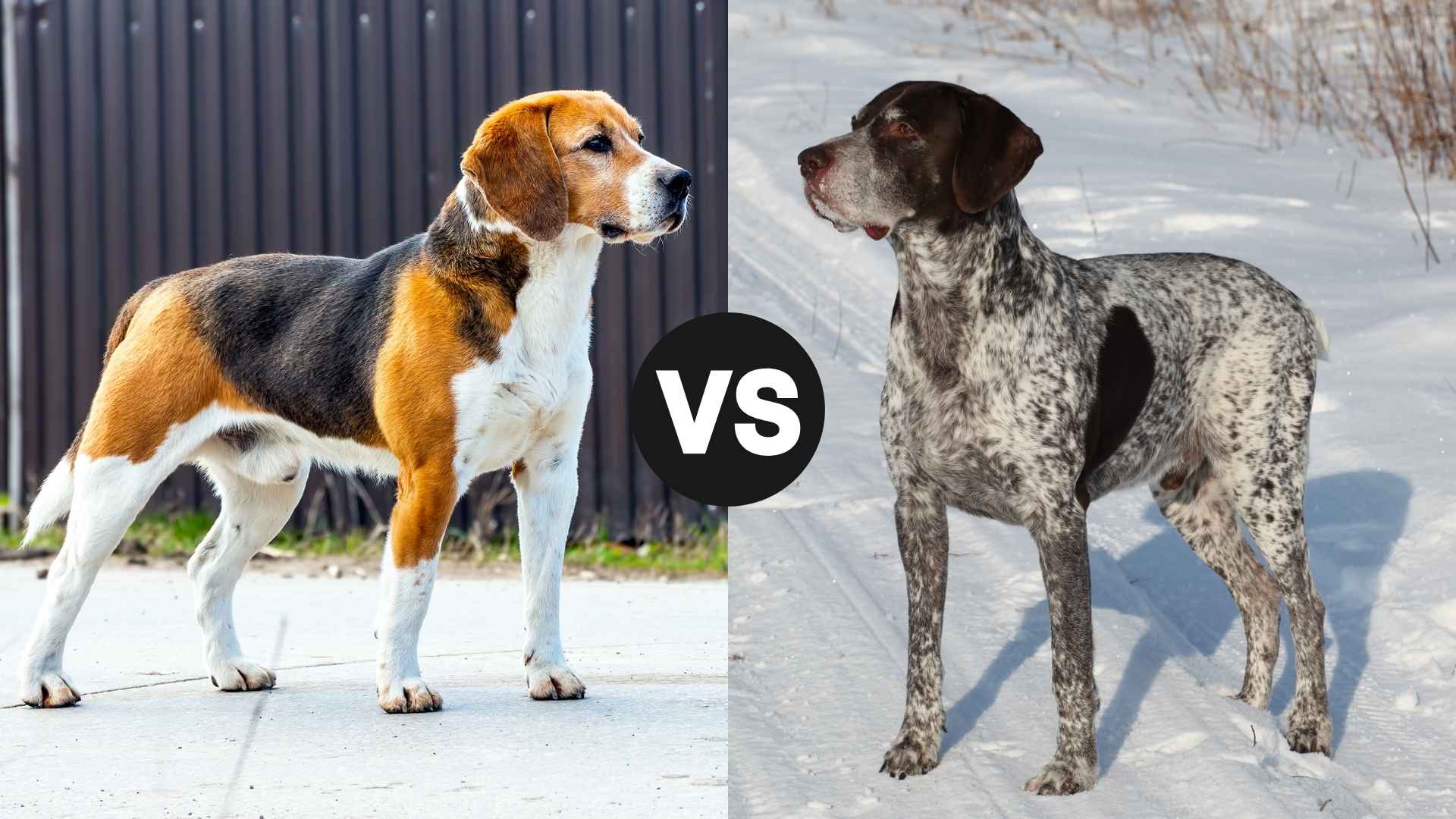When comparing Beagle vs German Shorthaired Pointer, you’re looking at two incredible breeds with rich hunting legacies and loyal fanbases. The Beagle, a compact hound breed with soulful brown eyes and a tricolor coat is renowned for its excellent scent-tracking abilities—especially in rabbit or hare hunting. Despite its small size, it’s a sturdy, affectionate dog, equally adored as a family pet.
In contrast, the German Shorthaired Pointer (GSP) is a sleek, athletic breed admired for its grace, speed, and unmatched stamina. Nicknamed “bird dogs,” GSPs are highly skilled at pointing and retrieving game birds, showcasing their intelligence and discipline in the field. With noble looks and an energetic spirit, they make exceptional companions for active households.
In this blog, we’ll dive deeper into their traits, differences, and ideal environments to help you decide which of these two remarkable breeds aligns best with your lifestyle.
Beagle vs. German Shorthaired Pointer
When comparing Beagle vs. German Shorthaired Pointer, the most striking differences lie in their size, purpose, and energy levels. Beagles are small, sturdy hounds with an exceptional sense of smell, originally bred for tracking rabbits and hares. Their short tricolor coats, hanging ears, and soulful brown eyes make them easily recognizable.
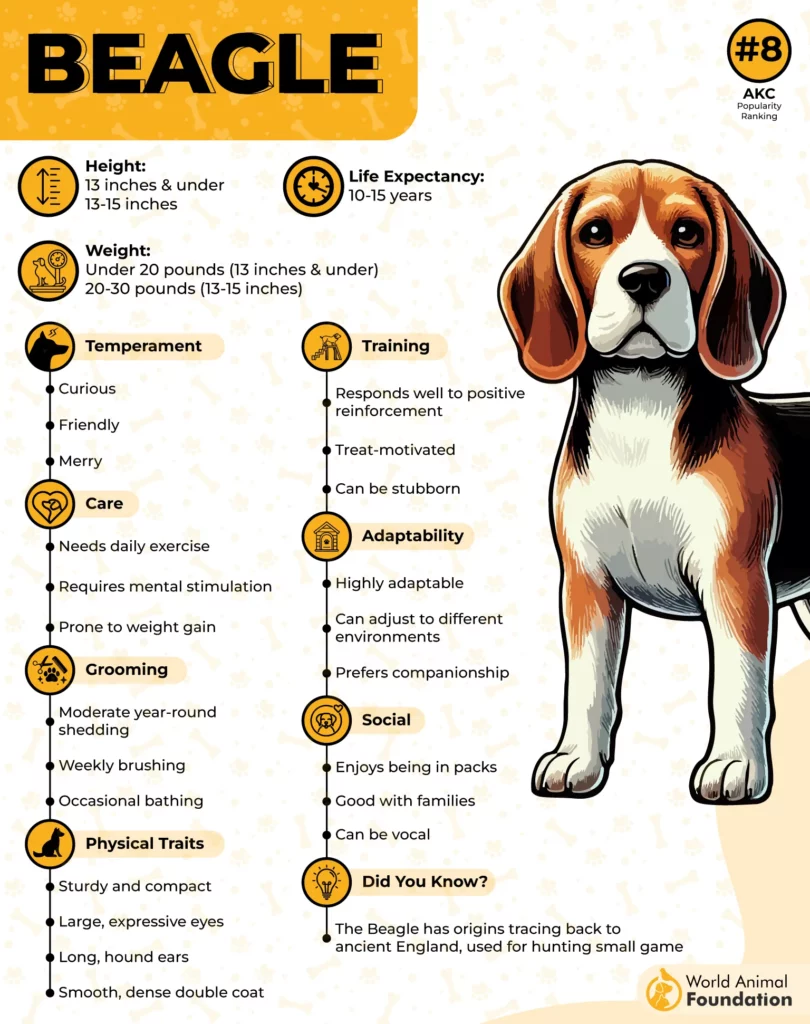
Despite their compact build, Beagles are surprisingly heavy for their height and are known for their tireless stamina on the trail. They are affectionate and alert and make great family pets as well as reliable hunting companions. With a history rooted in scent work, their role in developing breeds like the American Foxhound underscores their significance in the hunting world.
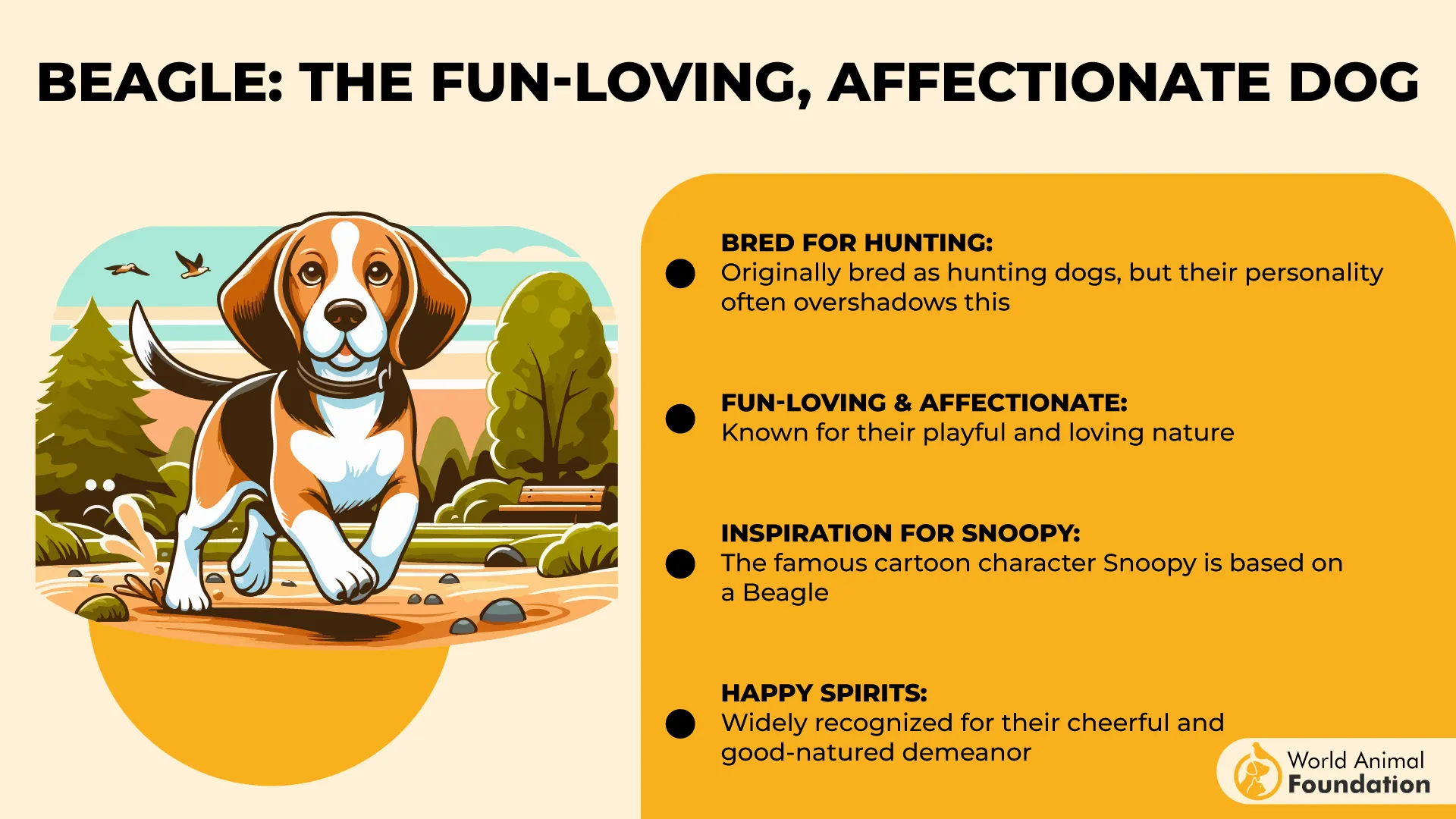
Fun Fact: Beagles’ sense of smell is one of the very best, according to PDSA. The U.S. Customs and Border Protection uses a “Beagle Brigade” at international airports to detect prohibited foods and agricultural items.
In contrast, the German Shorthaired Pointer (GSP) is a larger, more athletic breed developed in 19th-century Germany for versatile hunting. GSPs are admired for their noble looks, boundless energy, and adaptability in the field.
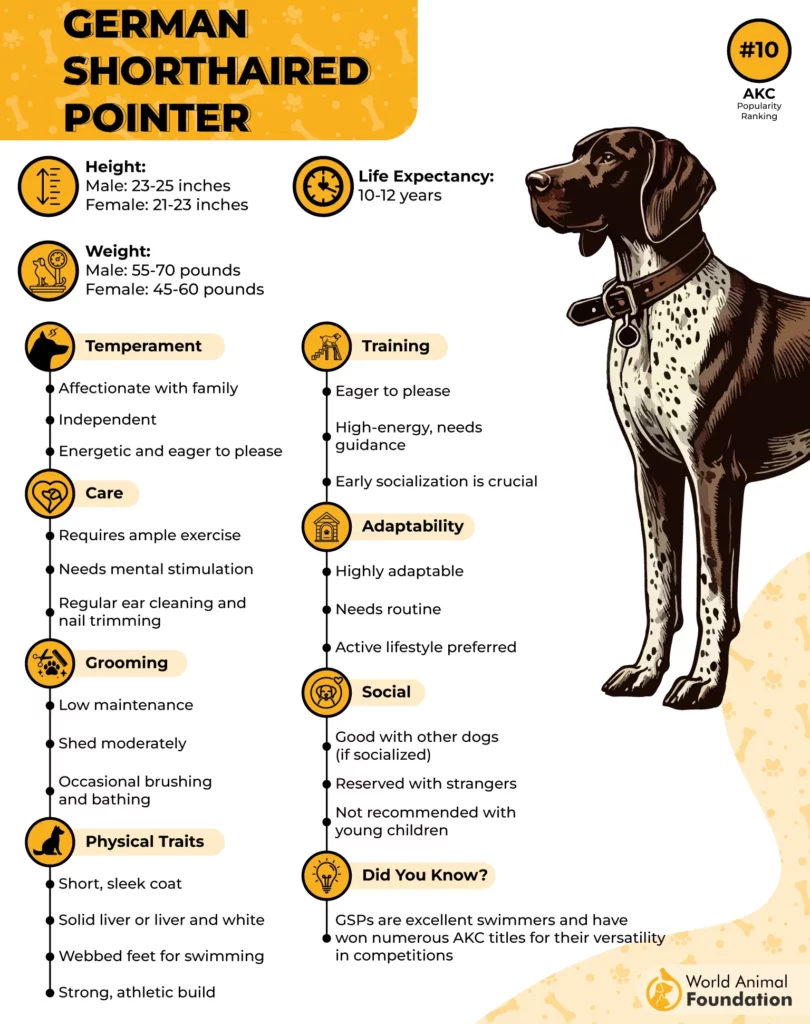
Unlike Beagles, they are bird dogs trained not just to retrieve but to point, pausing and signaling the presence of game with remarkable precision. These dogs can track and retrieve a wide range of animals, from raccoons to game birds and even deer. While they are friendly and affectionate, their high energy and working dog instincts make them best suited for experienced or very active owners.
Size and Weight Overview
When it comes to Beagle size and weight, the American Kennel Club recognizes two official varieties. The smaller type stands at 13 inches or less at the withers and weighs under 20 pounds. The larger variety measures more than 13 inches but does not exceed 15 inches, typically weighing between 20–30 pounds.

Despite their modest height, Beagles are solidly built and quite muscular, giving them a sturdy appearance and making them well-suited for both human companionship and hunting tasks.
In contrast, the German Shorthaired Pointer is a noticeably larger and more athletic breed. As a medium-to-large dog, a typical GSP stands between 21–25 inches tall at the shoulder and weighs between 45–70 pounds.
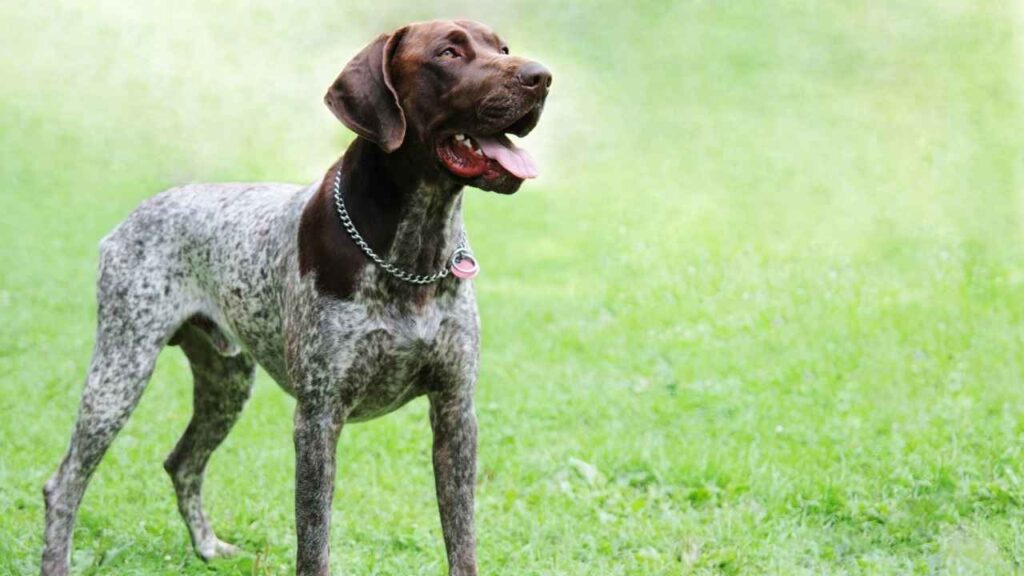
WebMD states their size reflects their purpose as versatile hunting dogs with powerful legs, deep chests, and strong builds designed for speed and endurance in the field. This substantial size difference plays a significant role in determining which breed is more appropriate for certain homes and lifestyles.
Personality Traits and Temperament
Beagles are affectionate, curious, and sociable dogs known for their friendly nature and strong bonds with family members, including children and other pets, and cats. Their history as scent hounds makes them naturally inquisitive, often led by their powerful nose into mischief—whether that means stealing snacks or following an intriguing scent.
Beagles are playful and energetic in their early years, though they tend to mellow and calm out as they age. Still, they require at least an hour of daily exercise to stay healthy and happy. Due to their hunting instincts, they can be vocal, with a signature bark or howl, and should always be supervised outdoors, either on a leash or in a secure yard.
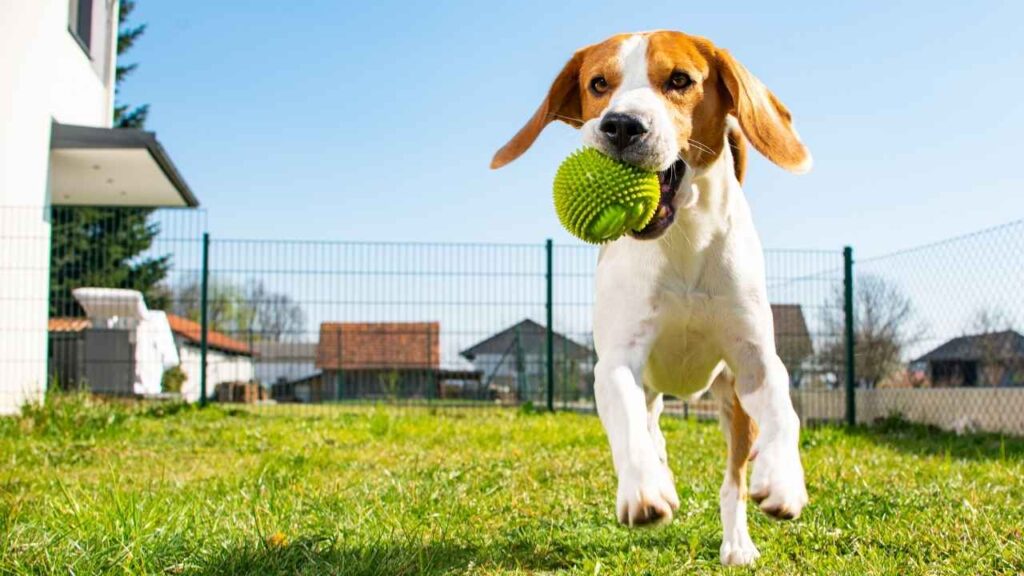
German Shorthaired Pointers (GSPs) are high-energy, intelligent dogs bred for endurance and agility. They thrive on physical activity and mental challenges, making them best suited for active families or individuals who can provide at least one to two hours of intense daily exercise. When their needs are met, GSPs are loving and enjoy relaxing with their humans.
However, without proper outlets, they may develop destructive behaviors like chewing or escaping. Their strong prey drive also means they may not do well in homes with kids and smaller pets. GSPs are instinctive hunters who, much like Beagles, should always be leashed or fenced in, as they’re quick to follow interesting scents.
Jaw Strength and Biting Tendencies
Beagles have a mild bite force of 130–150 PSI and may nip due to behavioral triggers rather than aggression. Early training and socialization are key to managing these tendencies.
Common Biting Triggers:
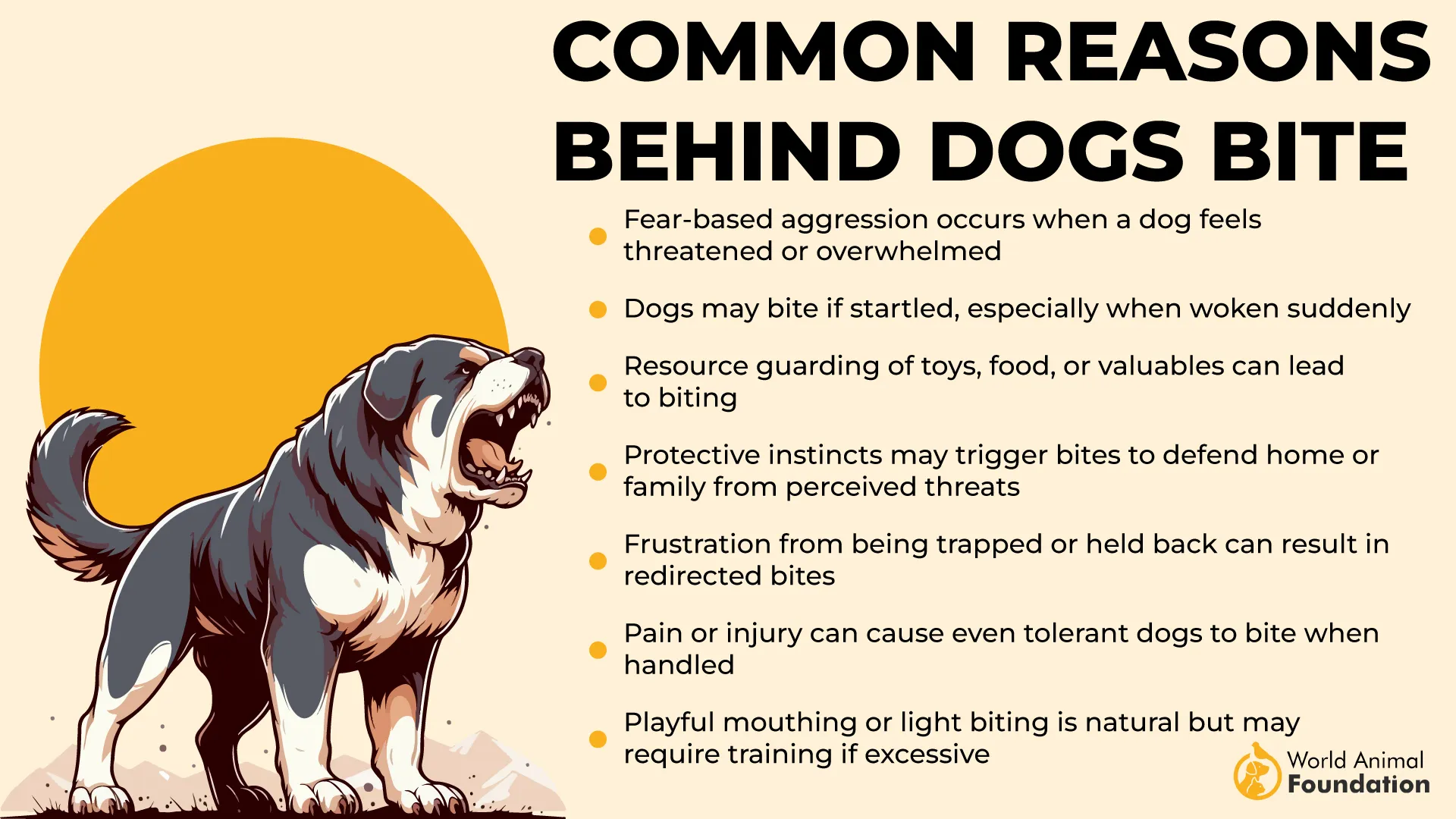
Teething (12–16 weeks)
Playful nipping or testing boundaries
Separation anxiety or overstimulation
Resource guarding (toys, food)
Lack of bite inhibition training
Specific bite force figures for German Shorthaired Pointers are not readily available. GSPs are not bred for protection or fighting, so their bite force is not as high as other breeds, such as German Shepherds. Moreover, they are not naturally aggressive. Biting typically stems from high energy, fear, or insufficient training.
Possible Biting Triggers:
Excitement or frustration from a lack of exercise
Fear, pain, or territorial behavior
Normal puppy play and exploration
Defensive response, not aggression-driven
Moderate guarding instincts
Lack of early socialization or bite inhibition training
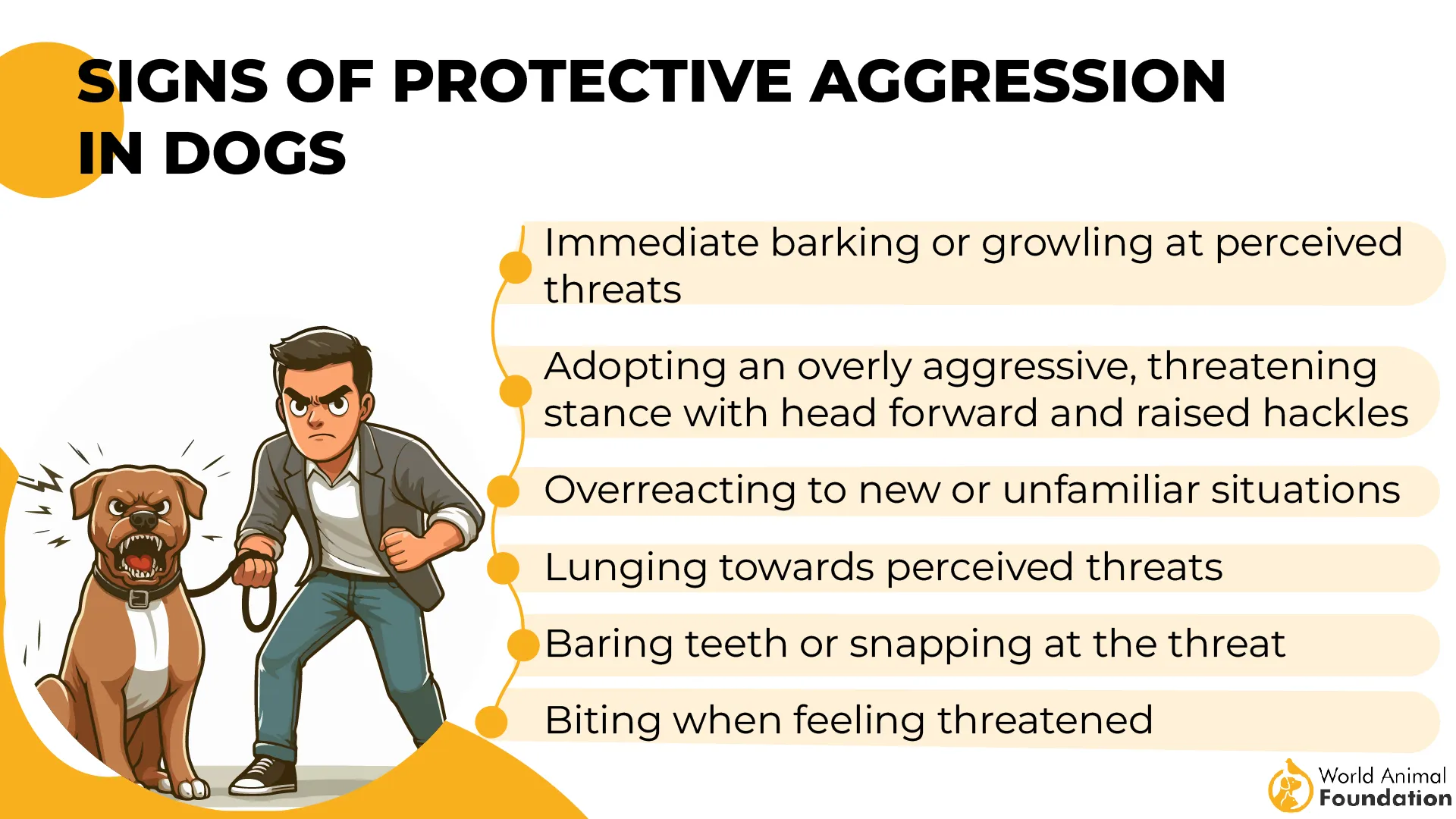
Lifespan and Breed-Specific Health Concerns
Beagles typically live between 10 to 15 years, making them a relatively long-lived breed. However, as noted by PetMD, they are prone to a few health conditions that require attention. Their long, floppy ears can lead to frequent ear infections, especially when moisture and debris accumulate. Obesity is another common concern due to their love for food and strong sense of smell, often resulting in overeating.
Other notable health issues include limber tail syndrome, food and environmental allergies, cherry eye, and epilepsy, all of which can impact quality of life if left untreated. Regular vet checkups and a balanced diet are key to keeping Beagles healthy into their senior years.
German Shorthaired Pointers (GSPs) have a typical lifespan of 10 to 12 years and are generally healthy breeds, but they do have several breed-specific health risks. Hip and elbow dysplasia are common, often causing pain and limited mobility over time.

PetMD states that GSPs are also prone to progressive retinal atrophy (PRA), which leads to gradual vision loss and subaortic stenosis. This heart condition can reduce their energy levels and lead to heart failure if untreated.
Additionally, their deep chest makes them vulnerable to gastric dilatation-volvulus (bloat), a life-threatening emergency. Genetic testing and routine veterinary care are essential to manage these risks effectively.
Grooming Needs and Allergy Compatibility
Beagles have a smooth, dense double coat that requires regular upkeep. They shed moderately year-round and more heavily in the spring, making weekly brushing with a grooming mitt or hound glove essential for controlling loose hair and promoting healthy regrowth.
Beagles do not require frequent bathing unless they get particularly dirty, but routine nail trimming is a must to prevent discomfort and mobility issues. However, Beagles are not hypoallergenic—in fact, they have high dander levels due to their thick coat, which can trigger allergies in sensitive individuals.

As noted by AKC, German Shorthaired Pointers (GSPs) have short, easy-to-maintain coats that benefit from brushing every few days to control moderate shedding. During peak shedding seasons, more frequent grooming helps prevent hairs from embedding in carpets and upholstery.
Occasional bathing with gentle shampoo, along with regular ear cleaning and nail trimming, keeps them looking and feeling their best. Despite their short coat, GSPs are not hypoallergenic. They still produce dander and shed consistently, which may pose challenges for allergy-prone households.
Choosing the Right Breed for Your Lifestyle
Beagles are ideal for families seeking a friendly, low-maintenance companion with a cheerful disposition. Their sociable nature makes them excellent with children and other pets, and their moderate size fits well in both apartments and houses.
Beagles can be independent and easily distracted, making training a bit challenging. They thrive in environments where they aren’t left alone for long periods, as loneliness can lead to barking or destructive behavior. If you’re looking for a playful, outgoing dog and have time to offer attention and structure, the Beagle is a great match.
German Shorthaired Pointers suit active households with the time and space to meet their high energy needs. These athletic dogs need plenty of daily exercise and mental stimulation to stay balanced. GSPs are affectionate and form close bonds with their families, making them great companions for older children and active adults.

However, their rambunctious nature may not be ideal for homes with toddlers or less physically active individuals. If you’re an outdoor enthusiast or have a large yard and enjoy staying on the move, a GSP may be the perfect four-legged fit.
Conclusion
Choosing between a German Shorthaired Pointer and a Beagle comes down to your lifestyle and needs. Beagles, originally bred for dove hunting, are smart, fun, and good with younger children and other dogs but can be stubborn and require patience and consistent training.
German Shorthaired Pointers, bred for endurance and retrieving, need plenty of exercise and mental stimulation to stay well-behaved and happy. Good GSP breeders stress early socialization to manage their energy and guarding instincts. Both breeds have unique traits—whether young or adult, male or female, one thing is certain: with proper care and training, they make loyal, loving companions.


